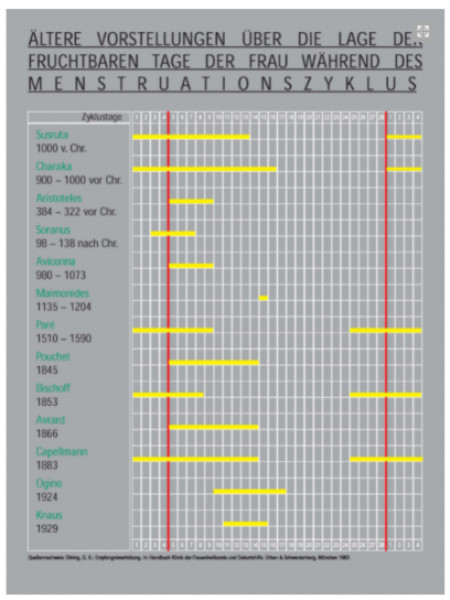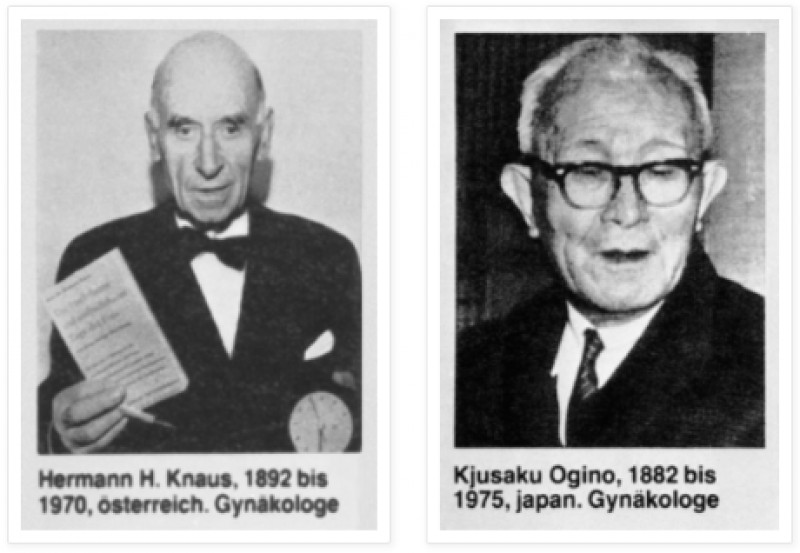The history of NFP
The symptothermal method
The symptothermal method, which uses cervical mucus in addition to changes in body temperature to determine fertile and infertile days, was first described by Austrian physician JOSEF RÖTZER in 1965. This method, based on the combination of cervical mucus and body temperature, exists in several variations.
The form developed by the Arbeitsgruppe NFP in the 1980s under scientific supervision, which is now commonly known as Sensiplan, is used safely in many European countries. The rules represent a synthesis of the approaches that have proven most effective worldwide. They mainly incorporate the methodology of DÖRING, BILLINGS and the World Health Organization (THYMA).
Names associated with the development of Sensiplan include Dr. Anna Flynn / Birmingham, Prof. Gerd Döring / Munich, Prof. Günter Freundl / Düsseldorf, Dr. Siegfried Baur / Munich, Dr. Notker Klann / Bruchhausen, Prof. Xaver Fiederle / Freiburg, Dr. Petra Frank-Herrmann / Heidelberg, Dr. Elisabeth Raith-Paula / Munich and Dr. Ursula Sottong / Cologne.
Today, the scientific support of the Arbeitsgruppe NFP is in the hands of Prof. Thomas Strowitzki and team at the University of Heidelberg.
The history of Natural Family Planning
Already 3000 years ago there were attempts to determine the fertile time of women and to use this knowledge for family planning. However, the chart shows that it was not until the 20th century that fertile time was correctly determined - with one exception: Maimonides, who lived from 1135 to 1204 AD, recognized that the beginning and second half of the cycle are infertile and that conception is most likely to occur around the middle of the cycle. Therefore, methods of Natural Family Planning, also called rhythm or timing methods, are nothing new and can be found in different cultures.
With the onset of the 20th century, various scientifically based natural methods became established in Europe, of which today mainly the so-called sympto-thermal variant is used. Since the 80s of the 20th century, a modern form of Natural Family Planning - Sensiplan - has developed, first in German-speaking countries, which, as scientific accompanying studies show, fully meets the user's need for safety and is now used in many countries.

The calendar method
The first scientifically based natural methods can be traced back to the Japanese OGINO and the Austrian KNAUS, who independently discovered in the 1930s that ovulation occurs 12 to 16 days before the following menstrual period.
However, the rules established by gynecologists OGINO and KNAUS for determining fertile and infertile days (calendar method) in a woman's cycle were so unreliable that this method is no longer in use or recommended today.

The temperature method
The temperature method is based on observable changes in body temperature during the female cycle.
Connections between the cyclic course of temperature and ovulation were first suspected by the Dutchman VAN DE VELDE at the beginning of the 20th century. The first to use the fluctuations of body temperature to determine the infertile days in the cycle was the German priest WILHELM HILLEBRAND in the 1930s.
Fundamental scientific publications on the relationship between the course of temperature and the menstrual cycle were published in 1940 by the Swiss RUDOLF VOLLMANN. In German-speaking countries, the temperature method was made known to wide circles in 1954 by a short, generally understandable guide by the German gynecologist GERHARD DÖRING, and his name has been closely associated with it ever since.
The cervical mucus method
The so-called ovulation or cervical mucus method of the Australian neurologist JOHN BILLINGS is based on the sole observation of the cervical mucus and is considered too uncertain for German conditions. It is offered in many countries of the South as part of national health programs and is available in different variants.
A very well-known, highly simplified form is the cervical mucus method according to the Indian physician Kathleen Dorairaj. Incidentally, the cervical mucus method was introduced into Indian culture by sisters of the order of Mother Teresa.

